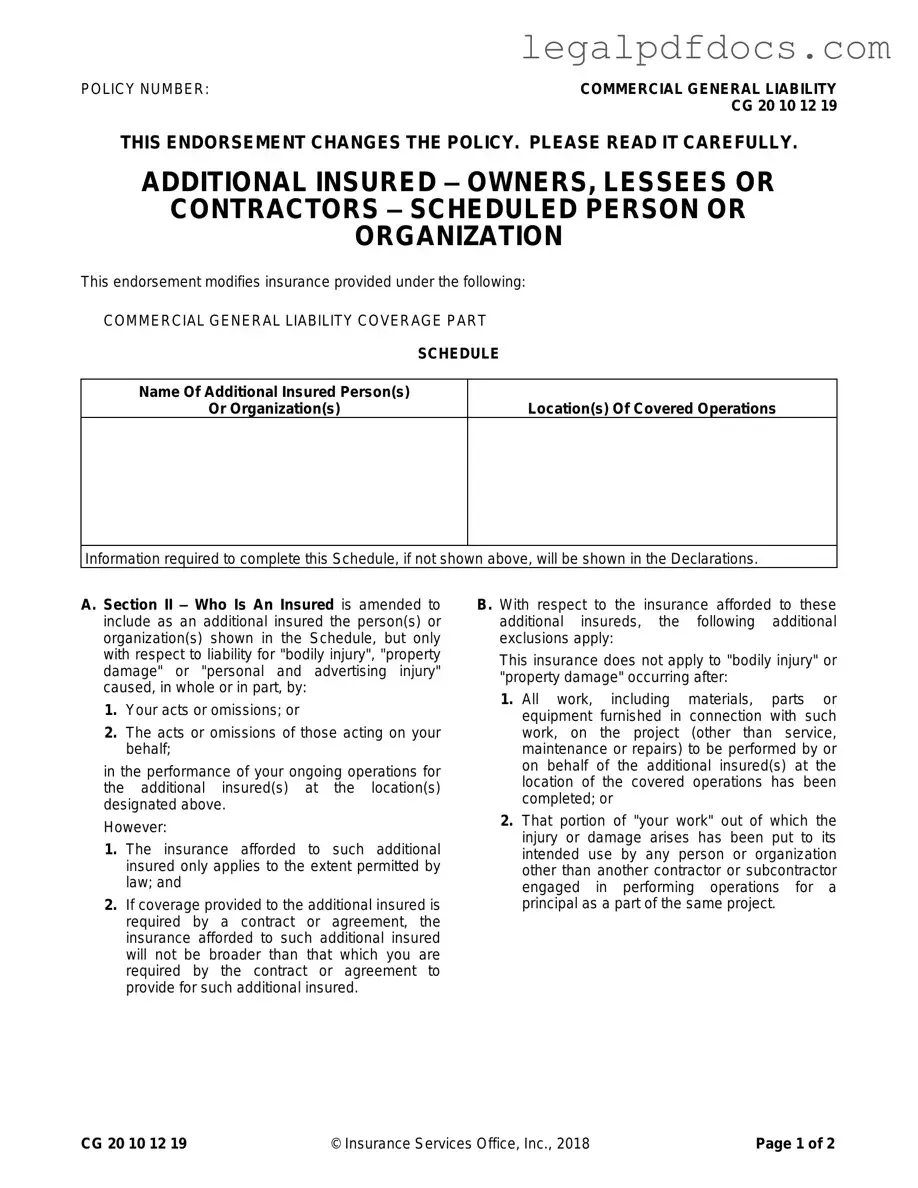The CG 20 10 07 04 Liability Endorsement form is an essential component of the Commercial General Liability (CGL) insurance policy, specifically designed to extend coverage to additional insured parties such as owners, lessees, or contractors. This endorsement modifies the existing policy, allowing for the inclusion of specified individuals or organizations as additional insureds, but only for liabilities arising from bodily injury, property damage, or personal and advertising injury linked to the actions or omissions of the named insured or their representatives. It is important to note that the coverage provided is limited to the scope outlined in the endorsement and is contingent upon the requirements of any applicable contracts. The endorsement also introduces specific exclusions, particularly concerning injuries or damages that occur after the completion of work related to the project. Furthermore, it establishes limits on the insurance available to additional insureds, ensuring that the coverage does not exceed what is mandated by contract or the existing policy limits. This careful delineation of coverage parameters is crucial for both insured parties and additional insureds, as it clarifies the extent of liability protection available under the policy.
